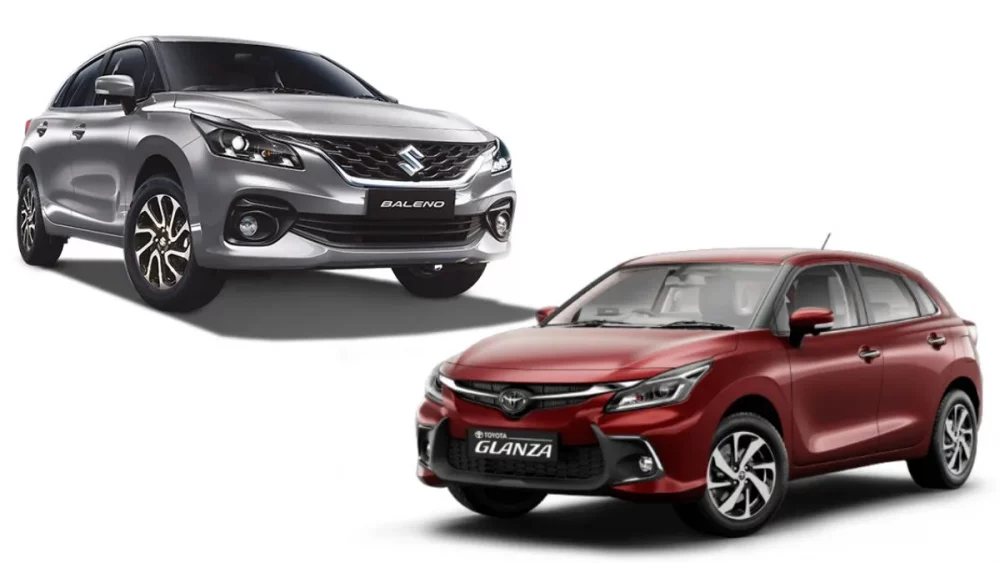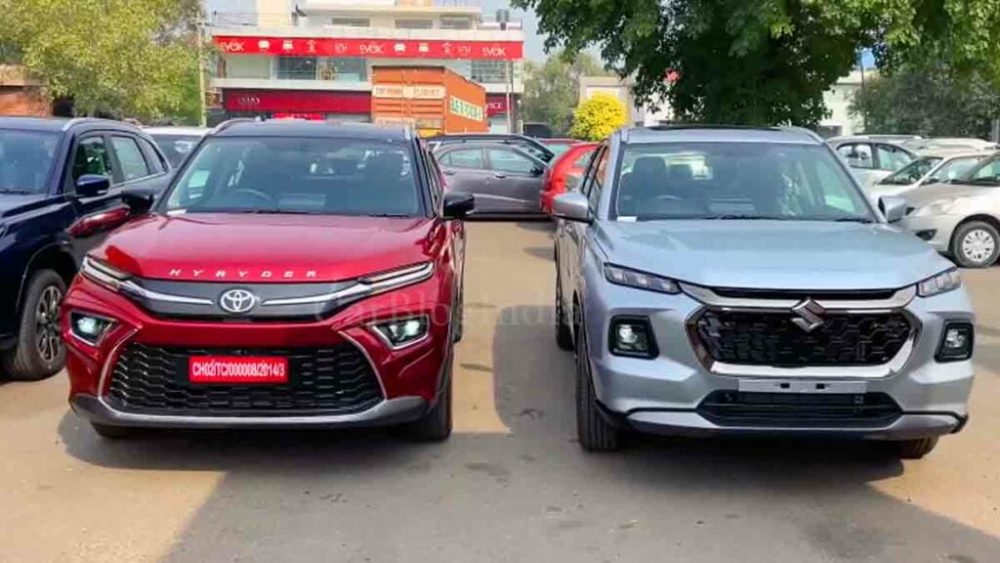Introduction:
In the intensely competitive world of the automotive business, one may expect rival automakers to keep their ideas and technologies under wraps. However, in recent years, a startling trend has emerged: rival automakers are increasingly embracing the power of collaboration and sharing. Instead of perceiving each other only as competitors, they realize the benefits of cooperation. This paradigm change toward collaboration reflects a growing realization in the automobile sector that sharing is, indeed, caring.
When it comes to technological invention and progress, the ancient adage “two heads are better than one” holds true. Rival automakers are recognizing that by banding together and pooling their resources, they may speed growth and reach breakthroughs that would have been difficult to achieve separately. This collaborative strategy is transforming the automotive scene and influencing the industry’s future.

In this article, we will look at the multiple benefits of Why Sharing is Caring for Rival Carmakers as well as the collaborative techniques that are being used. We will explore the numerous benefits that result from this emergent spirit of cooperation, ranging from greater technological innovation and cost reduction to improved customer experience and environmental sustainability.
Improved Technological Development and Innovation:
The automotive industry’s lifeblood is innovation, and rival automakers recognize that by sharing resources, knowledge, and technology, they can move the industry ahead at a faster pace. Collaborative initiatives enable them to tap into a larger pool of talent and experience, ultimately leading to game-changing breakthroughs.
The development of electric vehicles (EVs) is one of the primary areas where sharing has pushed technological advancement. Rival automakers have understood that by working on the development of EV platforms, battery technologies, and charging infrastructure, they can more successfully handle the hurdles of electrification. This collaboration not only lowers development costs but also speeds up EV adoption, making them more accessible to consumers.
Similarly, the race to self-driving cars has seen unprecedented collaboration among competitors. Carmakers can collaboratively address the difficulties and regulatory constraints of self-driving technology by sharing research, data, and testing facilities. Collaborative efforts allow firms to combine their knowledge and resources, resulting in faster breakthroughs in autonomous capabilities and, ultimately, safer and more dependable self-driving vehicles.
Another area where rival automakers are discovering the value in cooperating is connectivity. They can design networked systems that easily integrate automobiles with the digital world by sharing technology platforms and standards. Collaboration in this arena has led in better entertainment systems, advanced driver assistance capabilities, and increased vehicle-to-vehicle communication.
Cost reduction and increased efficiency:
Sharing among competitor automakers delivers major benefits in terms of cost reduction and efficiency improvement, in addition to encouraging technological innovation. Automobile manufacturers can obtain economies of scale, streamline operations, and optimize production processes by partnering and pooling resources.
One of the key areas where sharing saves money is in the creation of platforms and components. Rival automakers can work together to establish shared platforms that will serve as the backbone for various vehicle models. Carmakers can greatly cut their individual expenses by sharing the costs of platform development, such as engineering and design. This allows them to spend resources more efficiently, engage in R&D, and bring a greater choice of vehicles to market.
Similarly, carmakers can obtain economies of scale in the procurement and production processes by sharing components. By obtaining components like engines, gearboxes, and electronic systems in bulk, they can negotiate better terms with suppliers, resulting in cost reductions. Furthermore, shared components allow for standardization, simplification, and better interoperability among various vehicle models, which improves manufacturing efficiency and decreases complexity.
Collaboration among competitors extends to industrial processes as well. Carmakers can optimize their manufacturing operations and decrease capital expenditure by sharing production facilities and technologies. This is especially useful for low-volume or niche models, where independent production lines may not be economically viable. Carmakers can share manufacturing capacity, cut overhead costs, and increase overall production efficiency by collaborating.
Customer Experience Improvements and Market Expansion:
Collaboration and collaboration among rival automakers go beyond cost savings and efficiency gains. They also have a significant impact on improving the customer experience and increasing market potential. Car manufacturers can produce better goods, improve services, and reach new client segments by collaborating.

One of the primary advantages of collaboration is the potential to use shared technologies to improve the entire client experience. Rival automakers can develop innovative safety features, intuitive infotainment systems, and seamless connectivity options by sharing their resources and experience. Collaboration allows for the integration of cutting-edge technologies and ensures that customers receive the most recent developments across several vehicle types. This not only enhances consumer happiness but also sets a higher standard for the entire sector, encouraging ongoing innovation and progress.
Furthermore, through collaboration and sharing, automakers can grow their presence in new markets and reach a larger client base. Collaborative initiatives allow firms to access markets where they would not have been able to establish a strong footing otherwise. Car manufacturers can manage local rules, analyze client preferences, and adjust their goods to specific market demands by leveraging their partners’ expertise and market presence. This market expansion provides for higher sales volume, revenue growth, and a more broad customer portfolio.
Collaboration can also help to accelerate the development of shared mobility solutions that address consumers’ changing needs. Rival automakers recognize the significance of providing flexible and sustainable transportation options in addition to traditional vehicle ownership. They can build shared mobility platforms, car-sharing services, and mobility-as-a-service (MaaS) solutions by collaborating. These initiatives allow them to capitalize on the rising demand for alternative mobility solutions and give clients with more transportation options.
Success Stories and Case Studies:
Let’s look at some real-world case studies and success stories that demonstrate the practical benefits of collaboration to properly appreciate the impact of sharing across competitor automakers.
- The Alliance Renault-Nissan-Mitsubishi: The Renault-Nissan-Mitsubishi alliance is one of the most renowned examples of successful collaboration in the automotive industry. This alliance, formed in 1999, has allowed the three companies to exchange technology, platforms, and manufacturing facilities. The alliance has accomplished key milestones in the EV market by partnering on electric car development, with models like as the Nissan Leaf becoming popular globally. The joint resources and experience of the alliance have resulted in cost savings, expedited innovation, and increased market presence.
- BMW and Toyota Collaboration: In 2011, BMW and Toyota formed a partnership to research fuel cell technologies and sports vehicle platforms. Because of this relationship, both businesses were able to share research findings and co-develop fuel cell technologies, resulting in breakthroughs in hydrogen-powered automobiles. Furthermore, the collaboration led to the combined development of the Toyota Supra and BMW Z4 sports automobiles, demonstrating the advantages of sharing platforms to build different models for each brand.
- Volkswagen Group and Ford agreement: Volkswagen Group and Ford announced a strategic agreement in 2019 to collaborate on electric and self-driving automobiles. The collaboration aimed to pool capital, technologies, and production capabilities. The companies hoped to speed the development and deployment of electric and self-driving vehicles by pooling their resources and enhancing their market competitiveness.
The Future of Automotive Industry Collaboration:

As the automobile industry faces significant transitions, the importance of collaboration and sharing across competitor automakers is set to grow. The future provides exciting opportunities for collaborative tactics to drive innovation, sustainability, and customer-centricity.
- Emerging technologies such as artificial intelligence, networking, and self-driving cars necessitate substantial study, development, and testing. Collaborative efforts will be critical in pooling resources, expertise, and data in order to speed progress in these areas. Car makers may overcome hurdles and realize the full promise of these technologies by sharing knowledge and collaborating on research.
- Mobility Ecosystems: Interconnected ecosystems incorporating diverse means of transportation are the future of mobility. Collaboration allows automakers to collaborate with other industry participants such as ride-sharing platforms, public transit providers, and technology firms. By pooling resources, data, and expertise, they can develop seamless, multimodal mobility experiences that offer ease, sustainability, and enhanced consumer pleasure.
- Environmental Sustainability: As the world’s attention shifts to environmental conservation, collaboration in the automotive sector can help generate long-term solutions. Competing automakers can collaborate on alternative powertrains, battery technologies, and sustainable materials. Collaborative efforts can result in the creation of eco-friendly automobiles, common charging infrastructure, and a joint commitment to decreasing the carbon footprint of the sector.
- Consumer-Centric Innovations: Collaboration among automobile manufacturers can result in innovations that prioritize the demands and preferences of customers. Rival automakers may produce vehicles and services that meet changing consumer wants by sharing market insights, customer data, and design knowledge. Collaborative techniques also allow automakers to pool their resources to invest in customer-centric technology like personalized in-car experiences, better safety features, and seamless connection.
- Collaboration can encourage the development of new business models and revenue streams. Automobile manufacturers can work together to develop mobility services, subscription-based models, and shared ownership schemes. They may produce novel solutions that address evolving consumer habits and preferences by combining their capabilities, assuring long-term sustainability and profitability.
Conclusion:
Sharing among competitor automakers has emerged as a significant driver of development, innovation, and sustainability in a fast-changing automotive industry. The advantages of industrial collaboration are numerous, including greater technological innovation, cost reduction, improved client experiences, and market expansion. Car makers have understood that sharing resources, information, and technology may move the entire industry ahead by putting aside old concepts of strong competition.
Rival automakers have achieved tremendous milestones in the development of electric vehicles, autonomous driving technologies, and connection solutions through partnership. They have expedited the pace of invention and brought about new advancements that benefit customers worldwide by pooling their knowledge and resources. Why Sharing is Caring for Rival Carmakers? Furthermore, collaboration has helped them to realize economies of scale, optimize manufacturing processes, and cut costs, resulting in a more efficient and competitive automotive ecosystem.
The success stories of strategic alliances and partnerships, such as the Renault-Nissan-Mitsubishi alliance, the BMW-Toyota alliance, and the Volkswagen Group-Ford alliance, demonstrate the practical benefits of collaboration among competing automakers. These collaborations have altered the industry, accelerated technology developments, broadened market prospects, and improved customer experiences.





